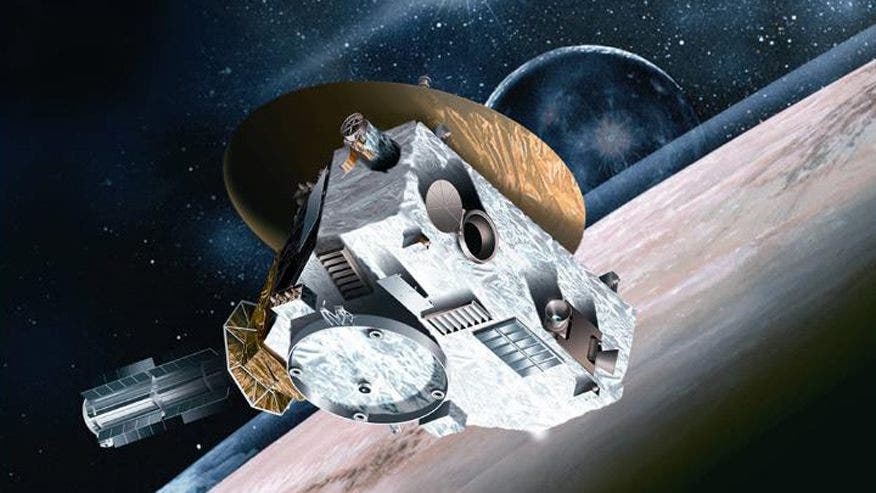

In addition to helping scientists study ancient landscapes on Pluto, New Horizons data is providing clues about its more recent features. (Image credit: James Tuttle Keane (JPL/Caltech)/NASA/Johns Hopkins APL/SwRI) Massive knife-like methane ice deposits extend to Pluto's far side The line in red reflects the system of valleys and mountain ranges that scientists think migrated from Pluto's equator to their current positions near its poles. White's team also found that Pluto's subsurface ocean likely provided some push to Sputnik and helped shift a bulk of the dwarf planet's mass toward its equator. Instead, these features likely existed along Pluto 's equator early on and migrated to their current locations nearer the poles because of the flip, he said.

"We can't really explain that in Pluto's current configuration," Oliver White, a New Horizons co-investigator at the SETI (Search for Extraterrestrial Intelligence) Institute in California, said during a presentation Tuesday at LPSC. However, the fact that Pluto changed its orientation in the past reveals that none of the terrains scientists now see is in its original location. These features are more than 186 miles (300 km) wide and span a similar distance from Pluto's north pole. In doing so, they found parallel mountain ranges and deep valleys that form what they think is a global tectonic system. Using images that New Horizons sent home from the 2015 flyby, they are now trying to trace the path of Pluto's flip. Researchers previously knew that Sputnik, which is filled with nitrogen ice, played a profound role in realigning the dwarf planet's surface. Instead, his job was to figure out why astronauts got space sick.Now, a group of researchers has attributed Pluto's flip to the formation of Sputnik Planitia, a 620-mile-wide (1,000 km) basin that makes up half of the iconic heart-shaped region on Pluto. Her father even trained to fly the NASA space shuttle, although never made it to orbit. Professor Young's interest in science and astronomy was piqued by her father, Larry Young, a well-known biomedical engineer in the US.

"In my experience, the first night is always the worst," he says. Professor Buie, who has discovered nearly 1,000 dwarf planets, tells everyone it only gets better from here. With another three nights to get it right, Professor Mark Buie from the US-based Southwest Research Institute - who is in charge of logistics - is relatively happy with the outcome. When it does that, it will temporarily block most of the light coming from the star - an event called a "stellar occultation".Ĭrucially for these astronomers, as that happens, the starlight will shine straight through Pluto's thin atmosphere, bending and colouring the starlight.Įxactly how it is bent and coloured will help the scientists create the weather report for the dwarf planet.īy the end of the night, all but two of the 12 telescopes are operating correctly - and these are problems they hope to iron out in the coming days. The central flashįor the scientists, the equation is relatively simple: In four days time, Pluto will pass directly in front of a star. The scientists hope to solve those mysteries through this project, and even - possibly - reveal what lies beneath Pluto's frozen surface.Īccording to Professor Young, this Earth-based mission - which is probing a different part of the atmosphere to New Horizons - could reveal even more secrets than the spacecraft itself. It's been getting thicker even though models suggest it should be getting thinner as the planet moves further and further from the sun. ( Supplied: NASA/Johns Hopkins University)Īccording to scientists, there are clues that the atmosphere on Pluto is not behaving as expected. A picture of Pluto taken by New Horizons in 2015.


 0 kommentar(er)
0 kommentar(er)
